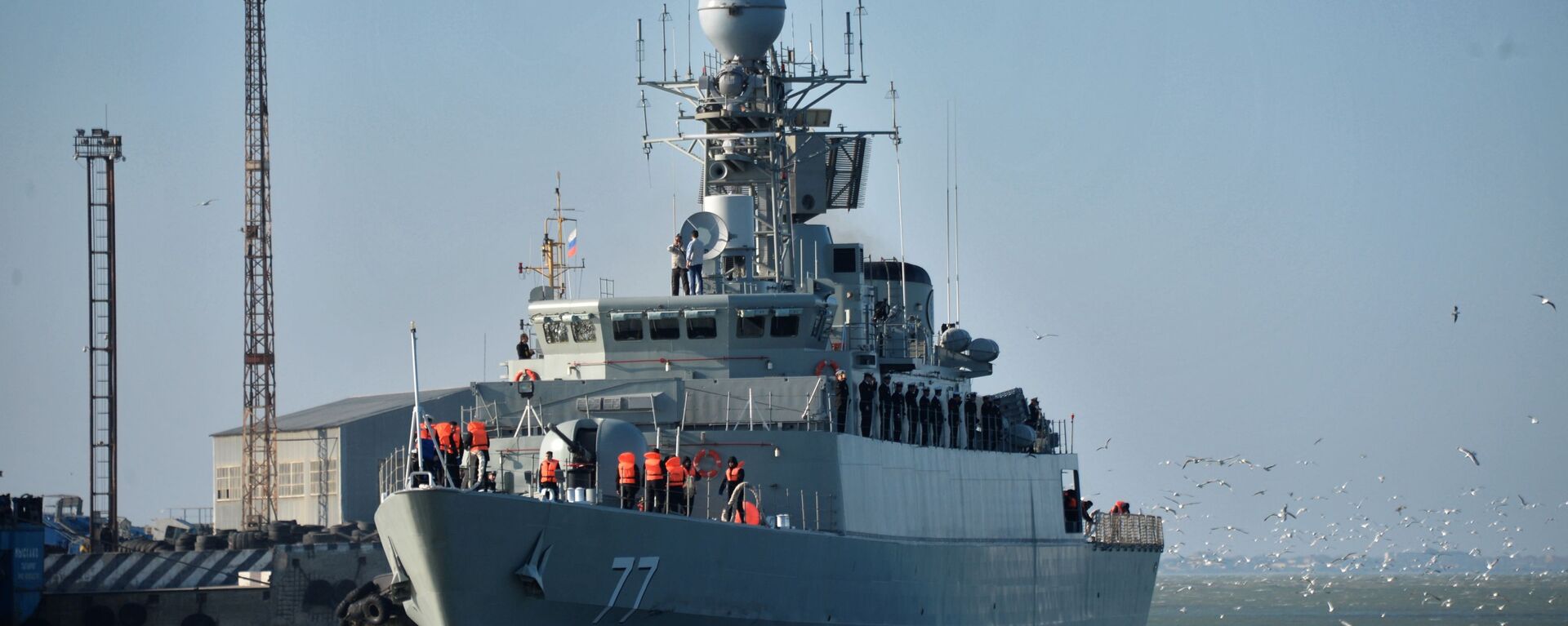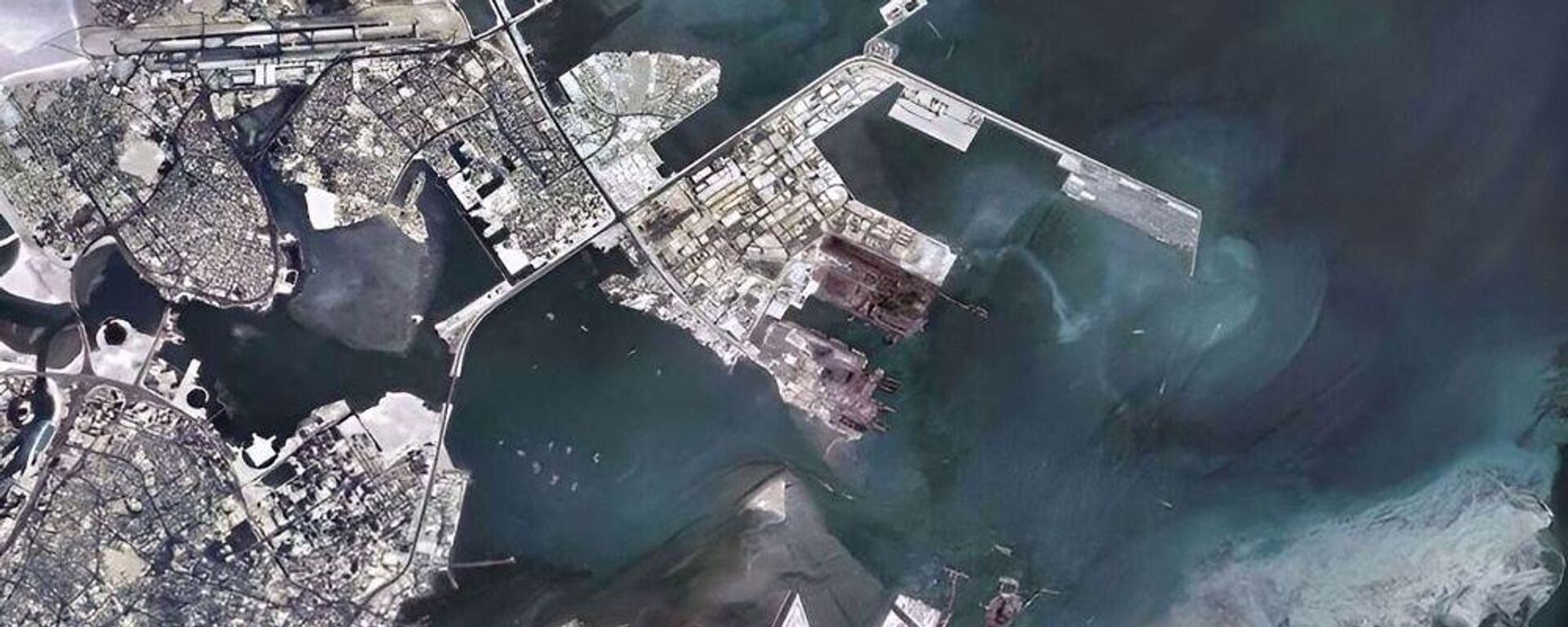https://sputnikglobe.com/20230709/iran-boosts-power-of-chopper-fleet-boasts-new-space-based-eye-in-the-sky-1111772932.html
Iran Boosts Power of Chopper Fleet, Boasts New Space-Based Eye in the Sky
Iran Boosts Power of Chopper Fleet, Boasts New Space-Based Eye in the Sky
Sputnik International
The Islamic Republic has created one of the most advanced defense-industrial sectors in the Middle East over the past 40 years, developing and producing a... 09.07.2023, Sputnik International
2023-07-09T13:18+0000
2023-07-09T13:18+0000
2023-07-09T13:54+0000
military
middle east
iran
satellite
helicopter
army
capabilities
surveillance
https://cdn1.img.sputnikglobe.com/img/07e7/07/09/1111772773_0:87:1667:1025_1920x0_80_0_0_41c0ddd58043d016db8a0d98841222b0.jpg
Iran’s ground forces now possess the largest and most powerful fleet of military helicopters in the Middle East, according to Iranian Army Ground Force Airborne Division commander Yousef Qorbani.Iran’s military helicopter fleet has been armed with long-range missiles allowing for pinpoint strikes, and dramatically increasing the mobility of the country’s armed forces, the commander added.Praising Iran’s defense industry workers and manufacturers for their efforts to domestically produce a variety of helicopter components, Qorbani revealed plans by Iran to create a new, “national helicopter,” with design work already underway in collaboration between the Ministry of Defense and knowledge-based companies.Iran’s Army and Air Force helicopter forces consist of about 160 attack and reconnaissance helicopters, including the HESA Shahed 285, the IAIO Toufan, and the Panha 2091. These designs take some cues (including airframe) from US choppers such as the AH-1J SeaCobra and the Bell 206 Jetranger – which Tehran purchased prior to the 1979 Islamic Revolution and managed to reverse engineer and modernize.The nation’s utility helicopter fleet includes the domestically-made HESA Shahed 274 and 278, Russian-made Mil Mi-17s, Italian Agusta Bell 206 and 212s, plus legacy US Bell 214, Bell UH-1N Twin Hueys, and Boeing CH-47 Chinooks.New Iranian Eye in the SkySeparately on Saturday, Iranian Space Agency spokesman Hossein Daliriyan announced that Iran’s new Khayyam high resolution imaging satellite, launched into low Earth orbit last August from the Baikonur cosmodrome on board a Russian Soyuz rocket, has become fully operational and begun its remote sensing activities.The 650 kg Khayyam satellite has a maximum resolution of one meter, and can send images back to Earth four times a day. Western media have alleged that the satellite, which is named after the great Persian polymath Omar Khayyam, may provide Iran’s military with new surveillance capabilities.As a fledgling space power, Tehran has already proven its capability to engage in space-based surveillance of its foes’ bases. Last year, Iran’s Noor-2 military satellite sent back a panoramic image centered on the headquarters of the United States Fifth Fleet in Manama, Bahrain. Its predecessor, the Noor-1, snapped detailed images of Al-Udeid Air Base – the Doha, Qatar-based home of US Central Command, a few months after the US chief of space operations had derided it as a mere “tumbling webcam in space.”
https://sputnikglobe.com/20230704/irans-new-destroyer-equipped-with-hypersonic-weaponry--navy-commander-1111653172.html
https://sputnikglobe.com/20220512/say-cheese-irans-new-surveillance-satellite-snaps-us-fifth-fleets-bahrain-hq-1095469692.html
iran
Sputnik International
feedback@sputniknews.com
+74956456601
MIA „Rosiya Segodnya“
2023
News
en_EN
Sputnik International
feedback@sputniknews.com
+74956456601
MIA „Rosiya Segodnya“
Sputnik International
feedback@sputniknews.com
+74956456601
MIA „Rosiya Segodnya“
iran, satellite, helicopter, chopper, capabilities, iranian army, army, military, satellite, surveillance, remote sensing
iran, satellite, helicopter, chopper, capabilities, iranian army, army, military, satellite, surveillance, remote sensing
Iran Boosts Power of Chopper Fleet, Boasts New Space-Based Eye in the Sky
13:18 GMT 09.07.2023 (Updated: 13:54 GMT 09.07.2023) The Islamic Republic has created one of the most advanced defense-industrial sectors in the Middle East over the past 40 years, developing and producing a range of sophisticated weaponry, radar equipment, and defense electronics, and enjoying world-class scientific research potential.
Iran’s ground forces now possess the largest and most powerful fleet of military helicopters in the Middle East, according to Iranian Army Ground Force Airborne Division commander Yousef Qorbani.
“We have managed to carry out night-time offshore helicopter operations, and could well destroy the designated targets. We have also undertaken heliborne operations in the dead of night. Iranian helicopters now feature the same sophisticated technology found in advanced helicopters around the world. We have acquired the ability to fly in adverse weather conditions,” Qorbani said, speaking at a press briefing in Tehran on Saturday.
Iran’s military helicopter fleet has been armed with long-range missiles allowing for pinpoint strikes, and dramatically increasing the mobility of the country’s armed forces, the commander added.
Praising Iran’s defense industry workers and manufacturers for their efforts to domestically produce a variety of helicopter components, Qorbani revealed plans by Iran to create a new, “national helicopter,” with design work already underway in collaboration between the Ministry of Defense and knowledge-based companies.
Iran’s Army and Air Force helicopter forces consist of about 160 attack and reconnaissance helicopters, including the HESA Shahed 285, the IAIO Toufan, and the Panha 2091. These designs take some cues (including airframe) from US choppers such as the AH-1J SeaCobra and the Bell 206 Jetranger – which Tehran purchased prior to the 1979 Islamic Revolution and managed to reverse engineer and modernize.
The nation’s utility helicopter fleet includes the domestically-made HESA Shahed 274 and 278, Russian-made Mil Mi-17s, Italian Agusta Bell 206 and 212s, plus legacy US Bell 214, Bell UH-1N Twin Hueys, and Boeing CH-47 Chinooks.
New Iranian Eye in the Sky
Separately on Saturday, Iranian Space Agency spokesman Hossein Daliriyan announced that Iran’s new Khayyam high resolution imaging satellite, launched into low Earth orbit last August from the Baikonur cosmodrome on board a Russian Soyuz rocket, has become fully operational and begun its remote sensing activities.
“The Khayyam satellite is currently taking images from different parts of the country as part of efforts to implement the memorandum of understanding. These images will be utilized in order to address legal challenges of ordinary people and state institutions concerning land use changes,” Daliriyan said. “We are ready to offer necessary data to other Iranian state agencies and help them solve their problems in various fields, including environmental monitoring, water resources, soil erosion and land subsistence,” he added.
The 650 kg Khayyam satellite has a maximum resolution of one meter, and can send images back to Earth four times a day. Western media have alleged that the satellite, which is named after the great Persian polymath Omar Khayyam, may provide Iran’s military with new surveillance capabilities.
As a fledgling space power, Tehran has already proven its capability to engage in space-based surveillance of its foes’ bases. Last year, Iran’s Noor-2 military satellite
sent back a panoramic image centered on the headquarters of the United States Fifth Fleet in Manama, Bahrain. Its predecessor, the Noor-1, snapped detailed images of Al-Udeid Air Base – the Doha, Qatar-based home of US Central Command, a few months after the US chief of space operations had derided it as a mere “tumbling webcam in space.”






